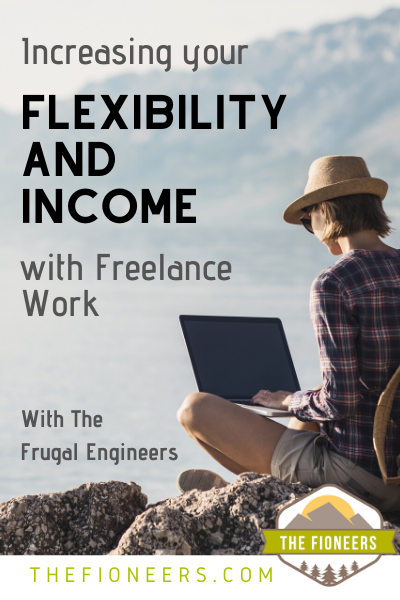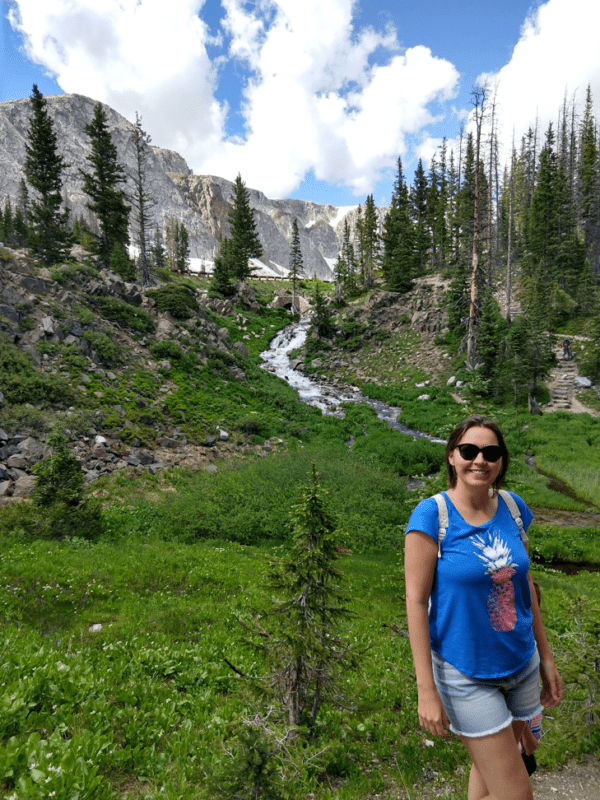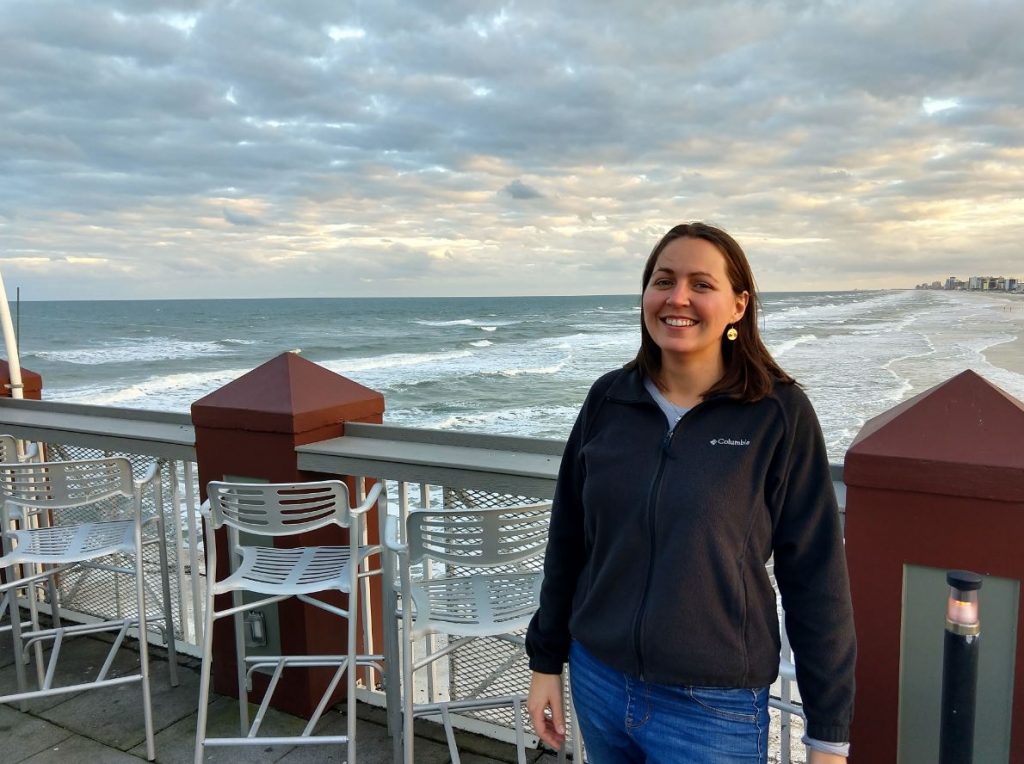
A few months ago, I wrote a post reflecting on my first 10 months of part-time work. After I published the post, someone reached out to me to say that they’d love to work part-time. However, part-time work, they said, wasn’t available in the field of engineering.
Once I heard this, I knew that I needed to get Kim from the Frugal Engineers to do a Slow FI interview.
About 6 years ago, when her daughter was born, Kim quit her full-time job. She has done part-time freelance engineering work ever since. Her husband (also an engineer) went part-time when their daughter was a toddler and also eventually left his job to freelance as well.
The Frugal Engineers are already financially independent, and they took a Slow FI path to get there. They focused on their lifestyle goals and their quality of life first.
My goal for my financial independence journey is to make a ton of small (and large) changes along the way. If I reach my financial independence number and don’t need to change much about my lifestyle, I will consider that success.
This is one thing that I love about the Frugal Engineers’ story. They made lifestyle shifts long before reaching FI. Because of this, they reached FI and didn’t need to change much related to their work (except for saying no a bit more often)! I’d love to be able to say that someday.
Like the Frugal Engineers, there are so many people who are balancing their financial goals with living an awesome life today. Some have chosen to do part-time or be a digital nomad. Others have chosen to travel the world, quit side hustles, take a mini-retirement, or simply find a job they enjoy.
Let’s get into their story!
1. Tell me a little bit about you.
I’m a wife, mom, writer, and engineer living in Wyoming. I grew up in the south and have lived in 35 places in 35 years. I like to take dance classes and swim in the indoor water park. I like writing about financial independence, debt-free living, and early retirement. My professional niche is freelancing on sustainable design projects, which I do part-time from home during the school year.
2. What deliberate decisions have you made to slow down and improve your life? Why did you decide to make this decision?
My husband and I both decided to leave the full-time engineering workforce and raise our daughter. We weren’t interested in “climbing the corporate ladder” anymore.
It’s sad to say. Watching our coworkers and managers experience early deaths was sobering. My manager and close personal friend passed away in his 40’s from a rare form of cancer, and my husband’s coworker was shot in the parking lot of his apartment after work. We realized that life is too short to spend working towards someone else’s business goals.
We wanted to be with our daughter from the beginning and enjoy lots of quality time while she’s still young. I left my full-time job when I was pregnant and continued working on freelance sustainable design projects. I had a client I’d been with for the previous two years (as a moonlighter). My husband went part-time when our daughter was a toddler. He later left his day job when she was a preschooler to start freelancing.
Career-wise, I grew a lot after going out on my own. I had to learn the ins and outs of running a small business that eventually morphed into a corporation. I also learned all the regulations and paperwork that go with hiring people. I enjoyed making those big decisions myself. I even enjoyed the small decisions like designing a website and partnering with environmental groups to champion their causes.
3. How has freelancing impacted your quality of life?
Being able to make our own schedules is the best part of freelancing. We can take time off without asking permission!
All of our work can be done online, so if we need to bring it with us on an extended trip, we can. It’s normal for us to visit family for weeks at a time and bring our laptops along for a few hours a week of touch-and-go engineering work.
This flexibility allows us to put family first and enjoy our time together with our daughter and our extended family.
4. How has freelancing impacted your financial goals or timelines?
Surprisingly, quitting the full-time workforce to freelance has had a positive impact on our financial goals. It has enabled us to grow our incomes faster by working less.
This is due to how billable hours work in engineering. Since we’re licensed professionals, the rates we charge are similar to what our previous employers charged their clients. Since we don’t have the overhead of a large company, we’re able to pocket the difference.
This means we can earn what we earned in 40 hours in roughly a third of the time. That’s the ultimate benefit – the same pay (or more) in fewer hours. The risk of “eating what you kill” as a freelancer can come with a substantial reward. The risk is that we don’t show up to the office every day with a pile of work handed to us by the management team and collect a steady paycheck at the end of the week.
We have to look for all of our own projects and set up the contracts and billing ourselves. We then do the work ourselves and manage the business budget on our own. However, the rewards (financially and personally) of running our own businesses outweighed the risks for us.
I think self-employment is a very natural way to work (at least for us), and it runs in our families too. All of our parents have been self-employed at some point in their careers, so we’d seen the benefits of getting to choose what you work on from an early age. For example, my dad had his own flooring company and he was able to bring us with him to help lay tile and carpet when we were still in elementary school. I still remember him teaching me to choose a business name that started with the letter “A” so it would be first in the yellow pages.
As of 2020, we are financially independent and consider ourselves early retirees in the most basic sense. Choosing to go out on our own was a major catalyst in being able to earn, save and invest more for early retirement. For example, we were able to stash more of our earnings into our Solo 401K plans than we’d been allowed to at larger employers. Being able to put $30,000/year more into our Solo 401Ks supercharged our investments.
5. What enabled you to quit your jobs and do freelance work (i.e. what financial or social context helped)?
The main things that we did were to live below our means and pay off personal debt.
When we graduated from college, we were teased by our coworkers for your lifestyle, but we didn’t change anything. My husband drove his high-school beater car even after his boss teased him.
We often rode our bikes or our $300 moped to get around town. We used a clothesline, packed our lunches, hosted house parties instead of nights on the town, and filled our home with secondhand furniture.
All the credit cards, car payments, and student loans were paid off within 1.5 years of graduation.
Another thing we did was to reduce our housing costs. We bought our first house with 20% down on a 15-year loan. This was back when 3% down for 30-year loans was common. We hustled to pay off our mortgage on our first house in 2.5 years. That meant my husband worked overtime, and I worked two jobs for two years. During this time, we lived on only one of our three income sources. Every extra dollar we earned was used to prepay the mortgage principal.
By removing all debt from our monthly budget (including a mortgage), we were able to confidently become freelancers and scale back our work hours.
Another contributor was living in Florida, a low cost of living area, instead of California, where we went to college. Florida also has a low state income tax. Geoarbitrage has served us well over the years.
6. Were there things in your life you adapted so you could continue to work toward your goals?
We’re always talking about ways to optimize our situation. We’ve moved across the country as a family several times and try to stay flexible with our choices. When deciding where to live, we make spreadsheets and do a lot of research first.

Recently we moved from Oregon to Wyoming for a lower cost of living (particularly taxes).
Moving to Wyoming helped advance our FIRE timeline by several years based on a few factors:
- No state income tax in Wyoming (including on retirement income aka 401K/IRA withdrawals).
- Lower housing prices in Wyoming and lower property taxes and homeowners’ insurance.
- Lower college costs in Wyoming than Oregon.
- General lower cost of living in a “flyover state” than in a coastal state.
While moving was one of the bigger decisions we made to optimize our finances, we still focus on the small everyday choices too. We comparison shop for groceries, we visit the thrift store every week for clothing and household items, we drive older vehicles (and do our own maintenance), and we plan vacations around travel rewards redemptions.
After becoming freelancers, we made a few changes to further optimize our finances. We sold my SUV and went down to one car for a few years since we had eliminated a commute. We set up a home office in our house and tracked business expenses meticulously to make sure we didn’t miss any tax deductions. We continued networking and attending conferences in our industries to meet new clients and branch out into other areas of engineering (because depending on only one client for income is also risky).
7. Why and when do you think someone might consider “downshifting?”
Most folks I speak with have their “come to Jesus” moment when kids enter the picture. Kids change everything. The time that kids require has to come from somewhere. For some parents, that means sacrificing their own sleep, workouts or personal time. For us, this time came from the time we no longer spent at the office.
When my daughter was a baby, a friend asked why I wouldn’t pay $10/hour to put her in daycare so I could go earn $100/hour. I responded simply: “I’d pay $100/hour to spend time with my baby.”

The fact is, we only get 18 summers with our daughter. I don’t want her memories to be of full-day summer camps while Mom and Dad were at work. Instead, we take the summers off entirely now and travel the US in our RV.
Downshifting to spend more time with our daughter was a great decision. The concept of “seasons” of your career somewhat goes against traditional career advice (“Lean in! Climb the ladder!”), but at the end of the day, a career is only one part of what makes a whole and complete life.
Besides spending time raising kids, downshifting our careers has enabled us to spend more time with our aging parents. It’s common for us to visit our parents for 2-3 weeks at a time and help them with household projects, which was not something we’d be able to do with full-time jobs and limited vacation days.
We’ve also been able to prioritize our physical health now that we have more hours available during the day. I’m teaching dance fitness classes (a great way to make friends in a new town!) and my husband is honing his downhill skiing skills without the weekend crowds. Since our parents all lament not being able to do the things they used to do now that their bodies are aging (knee replacements, osteoporosis, etc.), we want to make the best of the time we have with our health.
There are so many more goals and dreams to fulfill outside of a full-time career. I’m thankful that we downshifted to freelance work while we were still young and healthy enough to chase those dreams.
8. How did your pursuit of FI help or hinder your decision to take on freelance work?
We had already decided to go freelance before discovering our “FIRE number”. In fact, we didn’t even run the calculations until after our daughter was born.
I ran across Mr. Money Mustache’s article about The Shockingly Simple Math Behind Early Retirement. We had already been tracking our spending, and I showed my husband that day that we could reach FI in six years (at age 35, i.e. present-day). It made sense to us since we weren’t living a super deprived life, so we just kept doing what we were doing.
For years, I made a career out of being a “team player.” I’d say yes when it wasn’t convenient. Bringing work on vacations, doubling up on projects when another freelancer was on leave, and saying yes to last-minute requests was normal.
In early 2019, we ran the number on moving to Wyoming and realized that we had reached “Wyoming FI.” After I realized this, it was the first time in eight years that I said “no” to my favorite client. It felt AMAZING to reclaim more of my time and energy, even in a small way.
Now when we discuss taking on work assignments, it’s for reasons besides money (intellectual stimulation, socialization, and personal development). Having reached financial independence reframes the way we evaluate our options, and it’s a real blessing to be able to make those big decisions without factoring in money. If anything, we make those decisions based on TIME (i.e. does it interfere with school vacations?) and ENERGY (do I really want to commute again?).
9. What advice do you have for someone considering a similar decision?
I recommend paying off debt as quickly as possible. Living debt-free means that you get to decide where every dollar you bring home goes, rather than being obligated to send it to collectors (or the bank for a mortgage). Being debt-free provides real freedom, and opens up more possibilities to take risks with your career.
Consider the “sacrifices” you’d make in your twenties and thirties (for example going on cheaper vacations like camping and road trips instead of flying abroad), and weigh those against the things you want to do as an adult. I’ve never traveled abroad, although many of my coworkers did regularly (like bachelor party weekends in Europe). Those same coworkers have to work a lot more than I do these days, and I have the time freedom and location independence to spend the entire summer in Europe if I choose. Delayed gratification pays off big time!
At the same time, it’s important to balance saving with spending time on things that matter now. Remember that you can usually find another way to make more money later. Time with family is fleeting. This may mean reducing your retirement investments for a year while you stay home with a baby who needs you more than your manager. For us, it doesn’t mean skipping retirement savings to blow the money on a bachelorette weekend.
It might seem contradictory to praise delayed gratification while also encouraging you to focus on the present. The way we’ve approached this balance is looking at seasons of life and making plans based on that. When we were in our twenties (before kids), we had all kinds of time to hustle and build our careers. For example, I worked two jobs for two years in my twenties to pay off our mortgage, so I could stay home with our daughter.
However, this meant delaying gratification with things like trips to Europe. We still did plenty of traveling in our twenties, but it was mostly by car, staying in tents. We saved the fancy trips for when we had more time on our hands to fully enjoy it without having to rush back to work next week.
Thank you, Kim, for sharing your story with us! I love hearing about the shifts that people make before reaching financial independence to make their lives better.
While there are inherent risks in doing freelance work and running your own business, Kim found that needing to find her own clients and create her own contracts was well worth it.
Freelancing allowed her and her husband to:
- Do work they enjoyed. As they gained more financial freedom, they became pickier about the assignments they took on. They could be more thoughtful about what the work would require of them.
- Make as much money in fewer hours. Eventually, they were able to make just as much money and work about 1/3 of the hours that they had previously. With the smaller overhead costs of running their own business, more of the profits end up in their bank accounts.
- Have the flexibility to focus on what they value. Part-time freelance work provides them with the flexibility to do extended travel. They spend summer breaks traveling with their daughter. They also have more time to spend with their aging parents and to do things they enjoy.
I love when Kim said that there are “so many goals and dreams to fulfill outside of our career.” As aspects of life outside my career become more important to me, I feel the benefits of working less. Working part-time provides me time and energy to focus on the things that I value. For me, that’s my health, creative passions projects, strong relationships with friends, and travel.
I found it interesting how Kim talked about balancing delayed gratification with a focus on the present. In my life, I don’t see this as delayed gratification. To me, it feels like values-based spending. With values-based spending, you choose to spend money on things that you value. You then save by cutting costs on things that you don’t.
Values-based spending is based on each person’s individual interests and choices. For Kim, international travel wasn’t high on her priority list in her 20s. Not spending money on this (and other things) allowed her to save toward her other goals.
My values are different than Kim’s. That’s okay. Traveling the world and seeing new places is important to me, so I choose to intentionally spend money on it (and utilize travel rewards to reduce the costs). At the same time, there are many things that I choose to not spend money on (e.g. a second car, eating out frequently, and random stuff, etc.).
Knowing what we do and don’t value allows us to live a fulfilling life and save money toward our goals at the same time.
For Kim, focusing her money on the things that she values allowed her to transition to freelance work, accept assignments that fit in with her lifestyle, and focus her time on the things that she values most.
I hope you found Kim’s story as inspiring as I did.
If you’d like to continue following The Frugal Engineers, you can find them:

Blog: www.thefrugalengineers.com
Email: kim@thefrugalengineers.com (since Kim is no longer on social media!)

























Love this! It’s so important to hone in on what you truly value and then build your work and your life around those things. We’re slowing down work-wise to spend more time with our young kids as well. I would love to read more about Kim’s summers in the RV – we’ve talked and dreamed of doing that but haven’t yet!
Hey Kate,
Thanks for the comment! I think that Kim and her family have done a great job of determining what they uniquely value in life. I just looked on her blog and it looks like she hasn’t written a full-post about RV travel. You should definitely go and check out her site though, it has some great content.
Best,
Jessica
Hi Kate – we plan on documenting more RV travels this year, although we won’t be venturing far from home since our summer weather in Wyoming is idyllic for camping. Thank you for reading!